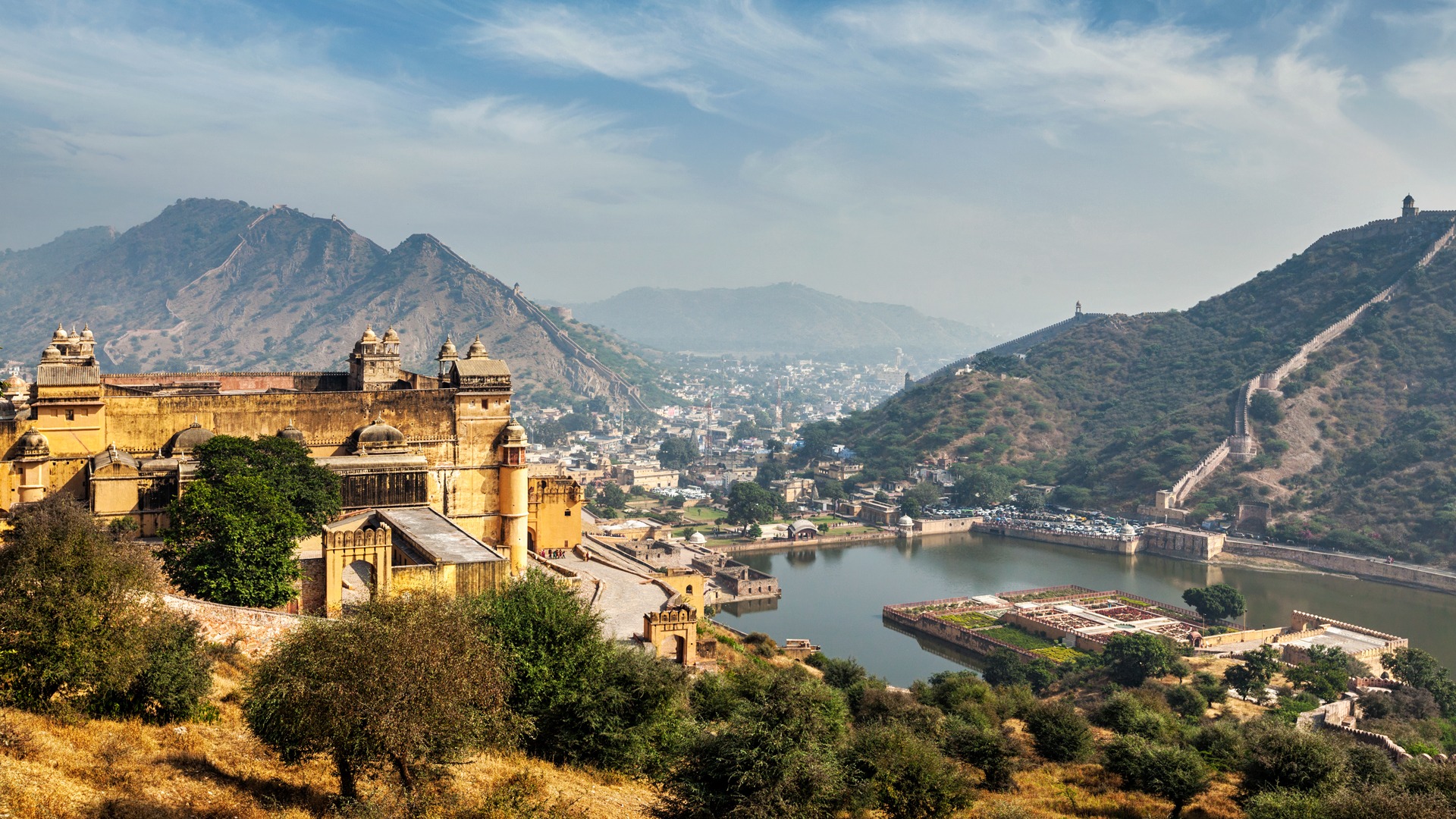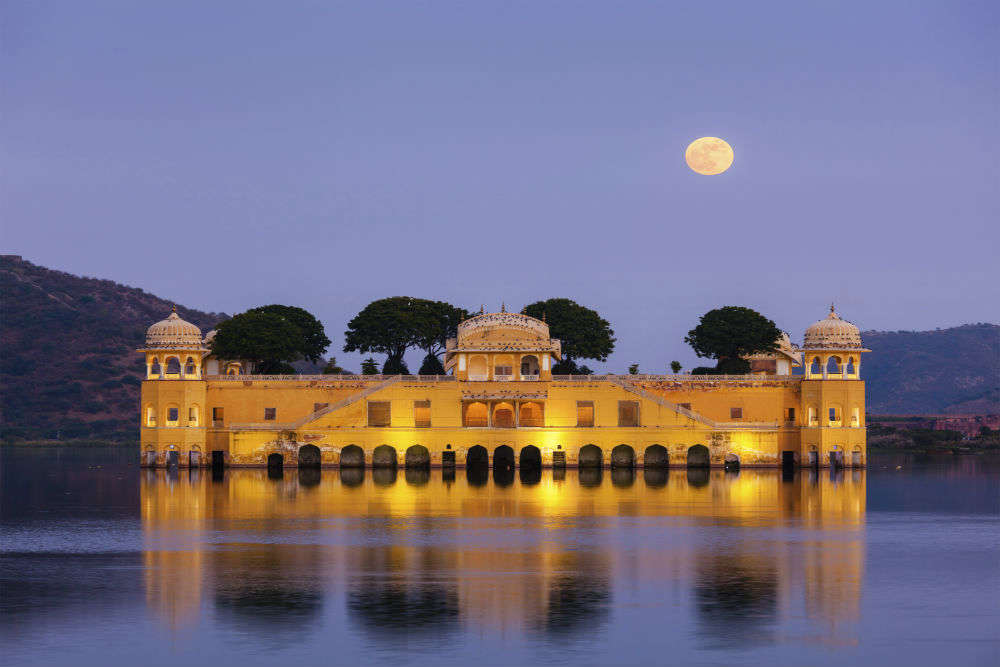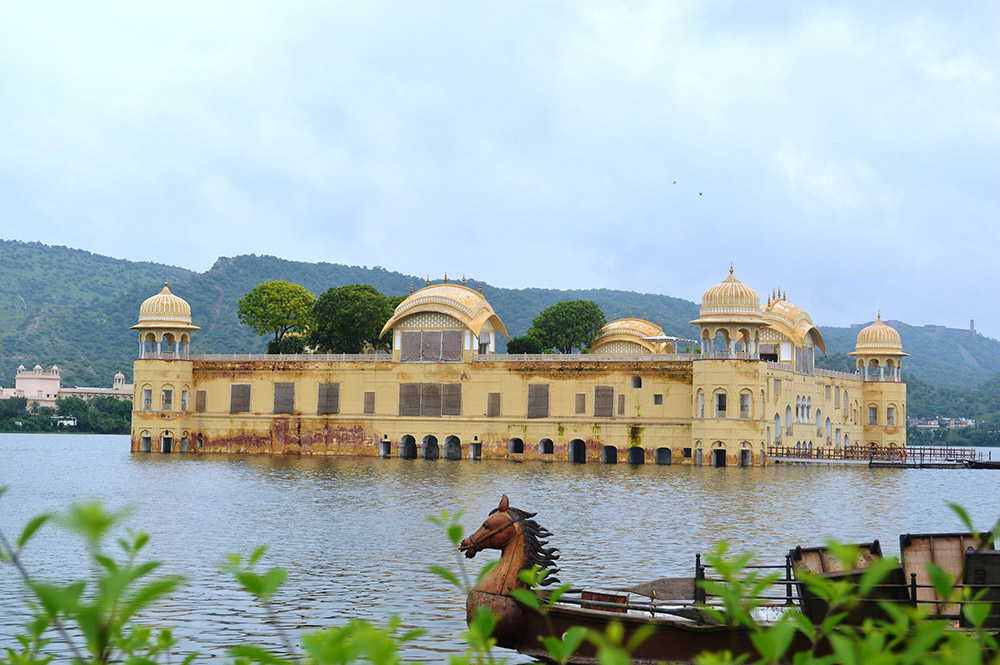Jaipur, the vibrant capital of Rajasthan, is a city that effortlessly blends historical grandeur with modern charm. Known as the Pink City due to the distinctive color of its buildings, Jaipur offers a rich tapestry of palaces, forts, temples, and bustling bazaars. Here’s a comprehensive guide to everything you need to know about Jaipur.

Historical Background
Founded in 1727 by Maharaja Sawai Jai Singh II, Jaipur was meticulously planned using Vastu Shastra, the ancient Indian science of architecture. The city was painted pink in 1876 to welcome the Prince of Wales, earning it the nickname “Pink City.”

Major Attractions
- Hawa Mahal (Palace of Winds)
- Description: This iconic five-story palace features 953 small windows, called jharokhas, designed to allow royal ladies to observe street festivities while remaining unseen.
- Location: Badi Choupad.
- Timings: 9:00 AM to 5:00 PM.
- Amber Fort
- Description: A majestic fort located on a hilltop, Amber Fort is known for its artistic Hindu-style elements, cobbled paths, and expansive courtyards.
- Location: 11 km from Jaipur.
- Timings: 8:00 AM to 5:30 PM.
- City Palace
- Description: The residence of the Jaipur royal family, this palace complex includes the Chandra Mahal and Mubarak Mahal, and showcases a blend of Rajasthani and Mughal architecture.
- Location: Jaleb Chowk.
- Timings: 9:30 AM to 5:00 PM.
- Jantar Mantar
- Description: A UNESCO World Heritage site, Jantar Mantar is an astronomical observatory built by Maharaja Sawai Jai Singh II, featuring the world’s largest stone sundial.
- Location: Near City Palace.
- Timings: 9:00 AM to 4:30 PM.
- Nahargarh Fort
- Description: Offering panoramic views of the city, Nahargarh Fort once served as a retreat for the royal family.
- Location: On the Aravalli hills.
- Timings: 10:00 AM to 5:30 PM.
- Jal Mahal (Water Palace)
- Description: This beautiful palace located in the middle of Man Sagar Lake is an architectural marvel, best viewed from the banks of the lake.
- Location: Amer Road.
- Timings: Restricted entry; visible from the road.

Cultural Experiences
- Shopping in Bazaars
- Johari Bazaar: Famous for jewelry and gemstones.
- Bapu Bazaar: Known for textiles, handicrafts, and mojari (traditional Rajasthani footwear).
- Tripolia Bazaar: Ideal for lac bangles and brassware.
- Traditional Cuisine
- Dishes to Try: Dal Baati Churma, Ghewar, Laal Maas, and Pyaaz Kachori.
- Popular Eateries: Laxmi Misthan Bhandar (LMB), Chokhi Dhani, and Rawat Misthan Bhandar.
- Festivals
- Jaipur Literature Festival: An annual event that attracts literary figures from around the world.
- Teej Festival: Celebrated with traditional music, dance, and colorful processions.
- Diwali: The festival of lights, where the city is illuminated with decorations and festivities.

Practical Information
- Best Time to Visit
- Optimal Period: October to March, when the weather is cooler and ideal for sightseeing.
- Transportation
- Air: Jaipur International Airport (JAI) connects the city with major domestic and international destinations.
- Rail: Jaipur Junction is the main railway station, with regular trains to major cities in India.
- Road: Well-connected by road with a network of highways; buses, taxis, and car rentals are readily available.
- Accommodation
- Luxury Hotels: Rambagh Palace, Taj Jai Mahal Palace, and The Oberoi Rajvilas.
- Budget Hotels: Hotel Pearl Palace, Jaipur Inn, and Umaid Bhawan.
- Local Tips
- Dress Modestly: Especially when visiting temples and historical sites.
- Stay Hydrated: Carry water bottles, as the climate can be quite dry.
- Respect Local Customs: Be mindful of cultural practices and traditions.

Conclusion
Jaipur, with its rich history, architectural wonders, and vibrant culture, offers an unforgettable experience for travelers. Whether you’re exploring ancient forts, shopping in bustling bazaars, or savoring traditional Rajasthani cuisine, the Pink City promises a journey full of discovery and enchantment. Pack your bags, get ready to explore, and immerse yourself in the regal charm of Jaipur.

